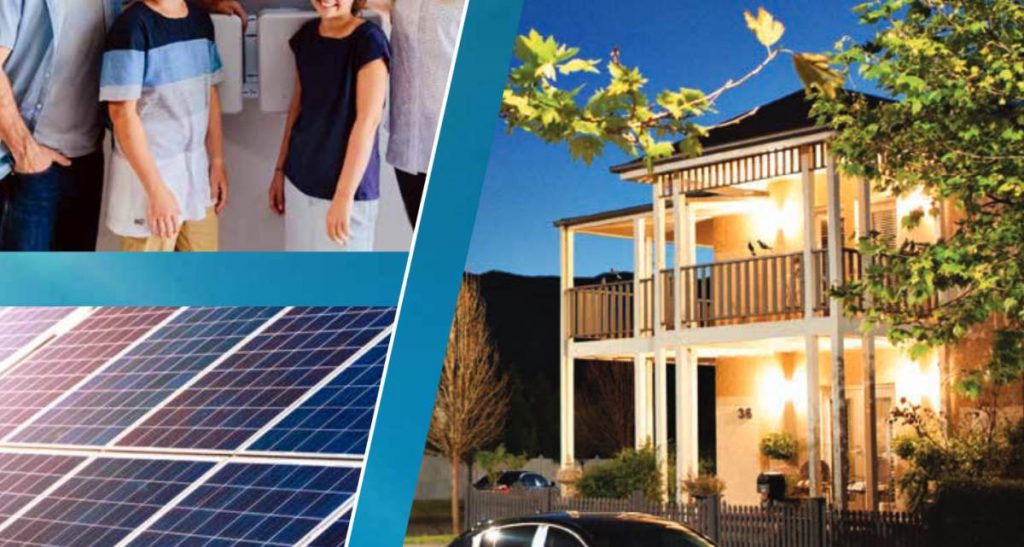
Image: Energy NSW
The NSW Government has flagged its interest-free solar-battery loans program – Empowering Homes – could commence towards the end of this year.
The initiative will support the installation of up to 300,000 battery and solar + battery storage systems over the next decade through the provision of interest-free loans to eligible residents.
Up to $9,000 for a battery system or up to $14,000 for a solar-battery system will be available to owner-occupiers with an annual household income of up to $180,000.
The State Government says Empowering Homes could unlock up to $3.2 billion in investment and see up to 3,000 megawatt hours of battery storage added to New South Wales’ energy system when complete.
Empowering Homes was a commitment made in the lead-up to the NSW state election earlier this year.
The first systems under Empowering Homes should be installed between December this year and February next year. The New South Wales government will soon be seeking delivery partners for the program.
“I want to deliver a program that provides robust consumer protections in terms of safety, system performance and value for money,” said NSW Minister for Energy Matt Kean.
If it’s value for money that Minister Kean is wanting, perhaps making the program solar-only would have been the way to go; at least initially.
As mentioned back in February when this was originally pledged, while the cost of solar batteries will drop in the years ahead, at this point in time batteries will still not pay for themselves before warranty expiry.
The NSW Government statement also offers figures on energy bill savings on solar + storage – but this is blended payback. Adding batteries as part of a solar power installation has a negative impact on solar-only’s rapid payback. Simple payback on a 6.5kW solar system in Sydney currently just 4.6 years.
The NSW Government says the initiative will also reduce emissions, but as SQ’s Ronald has pointed out, it’s solar power that is the heavy lifter – batteries don’t reduce emissions.
RenewEconomy revealed earlier this month $50 million is being redirected from a cancelled virtual power plant program to cover the costs of the NSW Empowering Homes Program.
There’s still a lot of detail yet to be revealed about Empowering Homes, and that won’t be released until later this year.
NSW Home Solar Power Status
Around 19% of dwellings in New South Wales had solar panels installed (Source: APVI) as at March this year, behind Queensland (34.1%), South Australia (33.5%) and Western Australia (27.6%). Victoria was sitting behind New South Wales at 16.9%, but VIC could rapidly close that gap with its very generous Solar Homes Package rebate (now a subsidy) program for PV, which is set to restart in a week’s time and will also offer interest-free loans.

 RSS - Posts
RSS - Posts



Hi Michael, would the NSW PV + Battery scheme have any benefits for flat rate tariff users given its interest free period?
And could the Tesla Power Wall2 be topped up with solar and Controlled Load 1 (dedicated off-peak circuit) for 2 cycles per day to then supply to the main circuit in the evenings and sale morning usage?
GLO,
It would be an interesting, and possibly illegal, circuitry arrangemnet required to achieve this.
More likely, “interesting” circuitry would not be used, and the Time Of Use tarriffs would be applied.
It’s entirely possible that the battery can be used VPP style to do exactly what you’ve requested.
1) Charge with solar during the day, and then feed-back during high demand evening.
2) Recharge with off-peak power (let’s say midnight to 5am), and then feed back during morning peak.
@GLO
You would not be able to mix the two circuits for the Powerwall. It would require sophisticated failproof automatic transfer switches between the grid tie inverter, the battery and controlled load circuits. It would need written approval from the electricity distributor to do such a thing. I highly doubt that controlled load would be allowed for charging grid connected battery systems. Most controlled loads must be specific loads such as hot water systems with large elements/hot water heat pumps, swimming pool pumps or heat banks. Air cons are not suited to controlled loads circuits due to the timing of power availability. A battery system is not considered a load but a energy storage device to power other devices at another time. Hot water systems and heat banks are also energy storage devices but the difference is that it’s storing heat, not electricity.
It is way easier to simply go on a ToU plan and forgo the Controlled Load setup (which is what I did). Then find the best ToU/FiT plan.
Depending where you are, controlled load tariffs are approaching Off-peak rates on ToU plans. Western Australia has already started, if not already, abandoned controlled load plans. It will not surprise me if other states will follow suit. ToU / SToU(Seasonal )/ DemandToU will become the norm. Flat and controlled load tariffs will eventually disappear once all house electricity meters are switched/upgraded to smart meters.
Thanks Dan and Graham for your input.
Given the configuration required and approvals, (or lack of) I am likely to forego the pipe dream of Solar and CL1 charging.
Simply maintaining Flat Peak rate and a 9.945Kw (across 2 arrays) system appears to be approved config on the main circuit.
That would then keep the battery integration simple.
I’ll leave the CL1 circuit for the Pool pump unless my daytime generation would supplement and render the CL1 circuit redundant. Thoughts?
Anyone know where and when and how to access the NSW Solar & Battery Interest Free Loan scheme that is supposed to kick off this year?